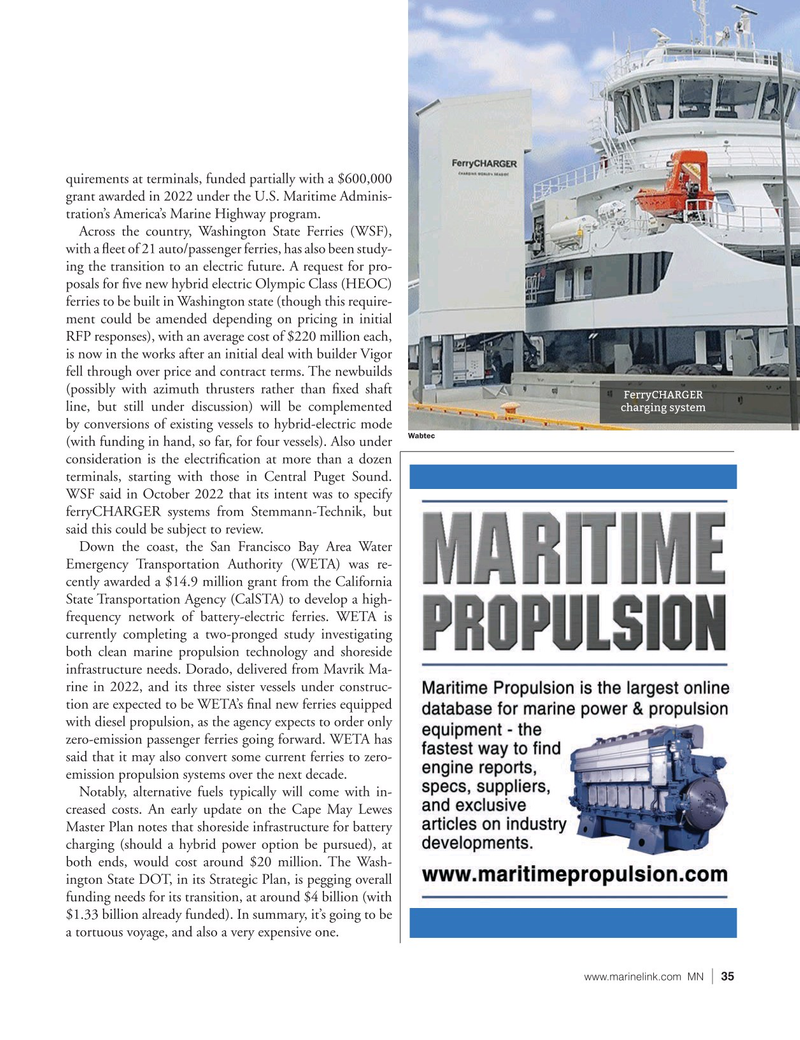
Page 35: of Marine News Magazine (February 2023)
Power & Propulsion
Read this page in Pdf, Flash or Html5 edition of February 2023 Marine News Magazine
quirements at terminals, funded partially with a $600,000 grant awarded in 2022 under the U.S. Maritime Adminis- tration’s America’s Marine Highway program.
Across the country, Washington State Ferries (WSF), with a ? eet of 21 auto/passenger ferries, has also been study- ing the transition to an electric future. A request for pro- posals for ? ve new hybrid electric Olympic Class (HEOC) ferries to be built in Washington state (though this require- ment could be amended depending on pricing in initial
RFP responses), with an average cost of $220 million each, is now in the works after an initial deal with builder Vigor fell through over price and contract terms. The newbuilds (possibly with azimuth thrusters rather than ? xed shaft
FerryCHARGER line, but still under discussion) will be complemented charging system by conversions of existing vessels to hybrid-electric mode
Wabtec (with funding in hand, so far, for four vessels). Also under consideration is the electri? cation at more than a dozen terminals, starting with those in Central Puget Sound.
WSF said in October 2022 that its intent was to specify ferryCHARGER systems from Stemmann-Technik, but said this could be subject to review.
Down the coast, the San Francisco Bay Area Water
Emergency Transportation Authority (WETA) was re- cently awarded a $14.9 million grant from the California
State Transportation Agency (CalSTA) to develop a high- frequency network of battery-electric ferries. WETA is currently completing a two-pronged study investigating both clean marine propulsion technology and shoreside infrastructure needs. Dorado, delivered from Mavrik Ma- rine in 2022, and its three sister vessels under construc- tion are expected to be WETA’s ? nal new ferries equipped with diesel propulsion, as the agency expects to order only zero-emission passenger ferries going forward. WETA has said that it may also convert some current ferries to zero- emission propulsion systems over the next decade.
Notably, alternative fuels typically will come with in- creased costs. An early update on the Cape May Lewes
Master Plan notes that shoreside infrastructure for battery charging (should a hybrid power option be pursued), at both ends, would cost around $20 million. The Wash- ington State DOT, in its Strategic Plan, is pegging overall funding needs for its transition, at around $4 billion (with $1.33 billion already funded). In summary, it’s going to be a tortuous voyage, and also a very expensive one.
www.marinelink.com MN 35|

 34
34

 36
36
